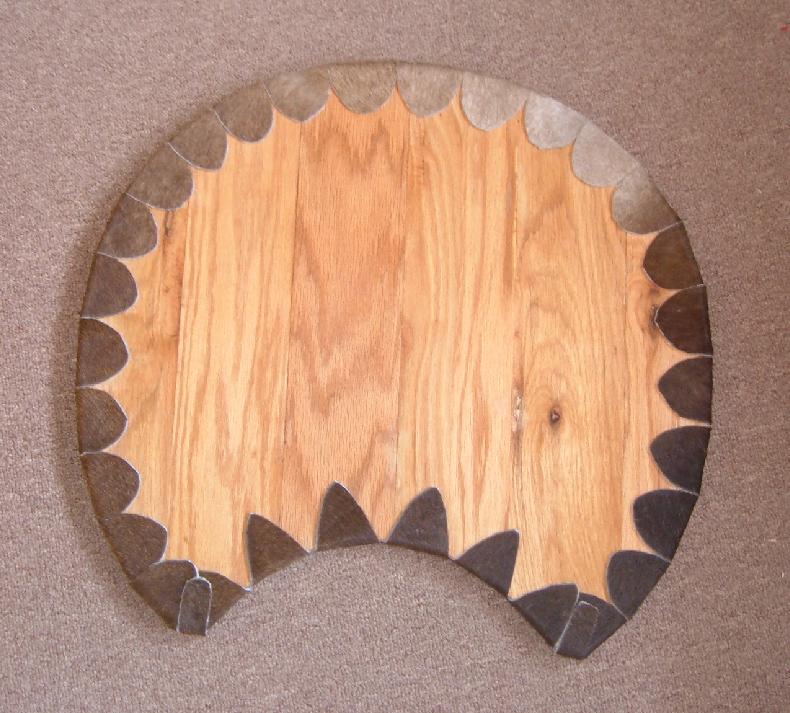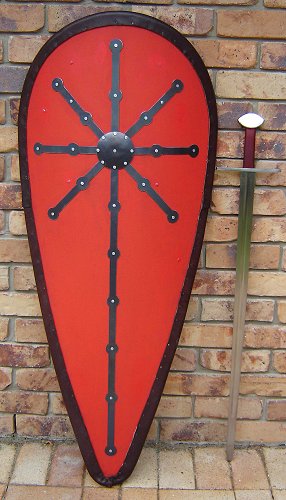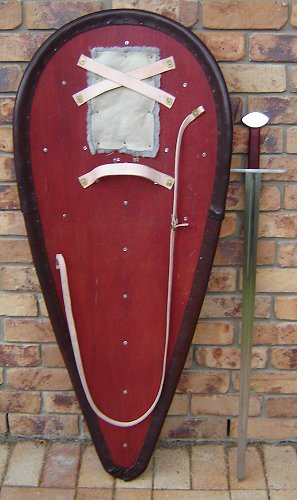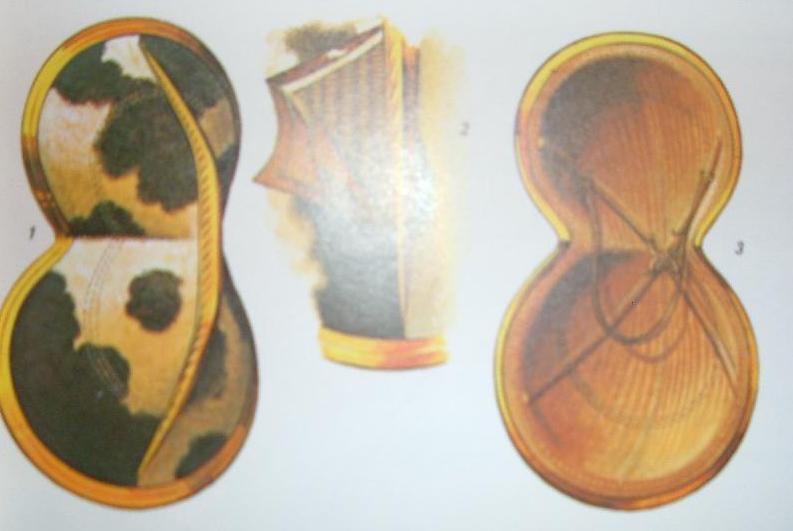Posts: 669 Location: Dinuba, CA
Sat 15 Oct, 2005 5:48 pm
Of the several
shield types I've been able to wield with a weapon, whether it was in mock combat with wooden swords or just swinging a real sword of spear by myself with it, I'd have to say I prefer a pelta. More specifically, the "inverted-pelta" shaped shields believed to be used by Late Mycenaeans, which have the cut-out of the circular base at the bottom, rather than the top. I'm currently reconstructing one from planks, although there is no evidence to say whether they were made from wicker or planks, one way or the other... The planks are actually Oak plywood, although I took care to make sure this wasn' t really noticeable by cutting the wood up, and then flipping different pieces over and trading their places to make the planks look random, and also by extending the hide around the edges to hide the construction. It has a cowhide cover glued to the front with tabs pulled over to the backside and glued/stitched down in place. The diameter from one side to the other is 22.5", so the shield is light, even with 1/2 inch thick planks.
It will have three round, semi-spherical bosses, two small and one large. This is a boss setup based loosely on the Kaloriziki finds, although they were conical rather than circular. A supposed large set of pectorals with raised bosses in the center of them were found at the Liatovouni Hill. The "pectorals" are shown here on display:
[ Linked Image ]
Dan Howard and myself have speculated that they were merely bosses, rather than part of a "leather corselet." This and the continuing trend in the use of semi-spherical bosses through history serve as enough evidence for me to use them in a "historic" outfit, based much on artistic evidence (which is what we Bronze Age reenactors must survive on, often enough!)
The rim will be about an inch wide, and be flat over the front of the shield, using the Kaloriziki find as supporting evidence.
The shield will have a hoplite-style grip with the forearm holder and the grip, based on a plate in "The Mycenaeans 1650-1100 BC" by Nicolas Grguric. The picture, which is part of a surviving fresco from Pylos, shows a warrior with a small, circular shield with an aspis style grip. I do not know if part of the picture was reconstructed for his arguments sake, but until I can find evidence to disprove the image, I'll rely on it. I've never seen the picture published anywhere else.
It will also have a guige strap, or telamon, attached to it. It will be made from multiple layers of black wool, stitched down the folded side. The strap will be in two pieces, and simply be tied in the front of the body when it's being carried, to allow the user to adjust it appropriately.
I find this style of shield to be the ultimate mix of mobility for myself! I'm a runner, and often find myself jumping about in combat with my friends. The inverted pelta shape allows the shield to be held against the body, but does not impede the movement of the legs at the same time. The telamon allows it to be worn as back protection when not in use, and also to be kept out of the way. The bosses, although no holes will be present, serve as added protection in the area the arm extends over on the shield's backside. The grip allows the light shield to be even more well distributed during combat, and held with a greater firmness.
Cheers!
-Gregory-
(p.s. Sorry if my description was a bit tedious. I like thorough explanations! I've also attached an image of the back of the shield as I have it so far. None of the bosses have been made and the rim not cut out yet. The grip and forearm piece have not been made yet, either. So far the hide is attached to the glued planks, and I need to drill holes around the edges of the hide and stitch it all up!)
 Attachment: 104.52 KB
Attachment: 104.52 KB

Late Mycenaean Shield (1200-1100)



